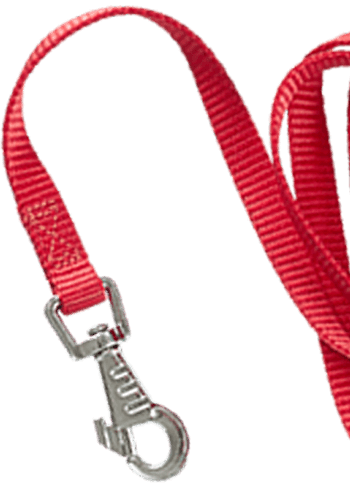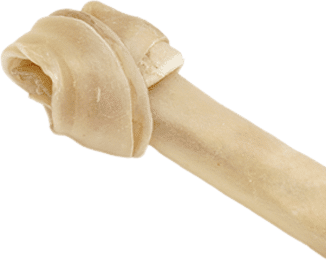


History of Labrador Retrievers
If you’re reading this, chances are you have a Labrador Retriever—or are, at the very least, interested in them and their history.
America’s most popular breed has a rich history with key players that brought the breed to where it is today. Over the course of three centuries, the very first Labrador Retriever came to be. Then, they were carefully bred in England by aristocrats and eventually talked about so highly that just about everybody wanted them.
This history guide will walk you through the full origins of Labradors, but first, let’s start with some of the most common origin-based questions that people have about Labs and where they come from.
Although Labrador and Newfoundland are in the same eastern province of the Canadian Shield, Labradors are a misnomer because they actually originated in Newfoundland.
Historically, the Newfoundland island has been a very prosperous fishing venue, so it makes sense that early settlers and fishermen used working dogs to help them with their fishing activities, like catching game and nets in the water.
The first instance where the Labrador Retriever name was ever used was in the mid-19th century. The Earl of Malmesbury described these newly imported dogs as such: “We always call mine Labrador dogs and I have kept the breed as pure as I could from the first I had from Poole.”
But if Labradors aren’t from Labrador, how’d they get their name? There are a couple of theories as to how the name came about.
The first theory is the most common one: Somebody along the way made the mistake of thinking the Labrador’s ancestor, the St. John’s water dog, came from the Labrador Peninsula.
Many people know that these dogs came from the St. John’s section of Newfoundland, but once the name was said once, it stuck and never changed.
The second theory is that these dogs are actually named after the Spanish and Portuguese terms for laborers: Labradores and lavaradores. Labrador’s peninsula is named after Portuguese explorer João Fernandes Lavrador, who founded the area in the 15th century.
Moreover, a village in Portugal called Castro Laboreiro, has a local breed of working dogs that closely resembles the St. John’s dog.
As with any dog breed, Labrador Retrievers came from breeding other dogs first. The first record of a Labrador Retriever dates back to the 1700s when local fishermen on the coasts of Newfoundland bred the famous Newfoundland dogs we know and love today with local water dogs native to the area.
Not much is known about these water dogs, except they were likely brought over by early settlers and already used as working dogs by them.
Drawing of a St. John’s water dog
When fishermen combined Newfoundlands with these small dogs, a new mixed-breed was born: The Lesser Newfoundland, also better known as the St. John’s water dog.
This breed had both of its parents’ best characteristics: They inherited the Newfoundlands’ loyal and hard work ethic, while the local water dogs had just the right coat and agility to withstand cold temperatures.
There is only one officially-recognized Labrador Retriever breed globally. But, there are a few different types that prospective owners can opt for if they’re looking for something specific in terms of personality or appearance. You can choose from American or English Labradors in black, yellow, or chocolate coats.
The first thing you should know is that there is no official distinction between American and English Labradors, but when you look at them side-by-side, you’ll see how different they are in appearance and personality.
Physically, you can see right away that English Labs are stocky, deep-chested dogs with thick necks, and shorter legs. American Labs are slimmer with a narrower head, longer muzzle, and longer legs. At first glance, American Labs look more agile while English labs are a bit thicker.
Personality-wise, American Labs are more active and energetic since they were initially bred for working. So while it’s true that American Labs are high-energy dogs, that’s not to say that English Labs aren’t: They’re just as hard workers, but they’re calmer, laidback, and less excitable than their American counterparts.
Learn more about the difference between American and English Labradors.
The American Kennel Club officially recognizes Labrador Retrievers in three different coat colors: Black, yellow (ranges from fox-red to light cream), and chocolate (ranges from light to dark). But back when the breed first started out, only black Labs were common because the public most desired them.
Through careful genetic breeding, breeders developed the color of yellow coats from the standard black coat. Eumelanin is the black and chocolate pigment, while phaeomelanin is red and yellow. During breeding, the genes combine to make one dominant over the other which produces the color of the coat.
When looking at a Lab’s genes, you’ll notice that black is always the dominant color. The black gene has two types: B, the dominant gene, and b, the recessive gene. So depending on the combination of genes inherited by the Labrador parents, you may get a black, chocolate, or yellow Lab.
But yellow labs have a unique gene, different than the other dogs, called E (dominant) and e (recessive)—and e has the power to override the B and b genes.
Here’s what you get with different genotypes:
There’s a lot more science behind these genes, so learn more about how they determine a Labrador’s coat—and you’ll understand how Snowy Pines keeps their Labrador puppies snowy white.
The complete history of Labrador Retrievers starts in the 1700s. However, it’s most likely that the breeding of Newfoundlands began in the 1500s.
A couple of centuries later local fishermen in the area began breeding the Newfoundlands with small, local water dogs. This breeding process created the Lesser Newfoundland, or St. John’s water dog which directly led to the modern-day Labrador Retriever.
Let’s look at how Labradors came to be throughout the 1700s, 1800s, 1900s, and 2000s.
The island of Newfoundland was traditionally a popular fishing colony before it was permanently settled and British Authorities began importing resources.
Fishermen had been in the Labrador and Newfoundland areas of Canada for many years because it fish were plentiful, so it makes sense that fishing is what Newfoundland is best known for.
Many people believe that early human settlers brought working dogs with them from the beginning, well before the British founded the area. Through years of mixed-breeding by these early settlers, many Canadian-based working water dogs were bred, such as:
The St. John’s dog is the most authentic and closest ancestor of the Labrador Retriever, dating back to the 1700s. Fishermen at this time bred the local water dogs with Newfoundlands which created a dog with a dense waterproof coat that allowed them to work and swim in cold and icy conditions.
These early dogs specialized in retrieving game, nets, ropes, and diving underwater to retrieve fish or bait that had fallen from hooks.
It wasn’t long after the St. John’s dog was bred that the British authorities learned of them and wanted them imported to the United Kingdom. After all, fishermen spoke very highly of them: These dogs were practically waterproof, dedicated workers, and even turned out to be excellent companions.
Once they arrived, the dogs were only adopted by wealthy individuals and English aristocrats. People were fascinated by their ability to hunt, retrieve, and work all day on land or in the water.
Soon enough, the Earl of Malmesbury, James Harris, heard all these good things about the St. John’s dog and requested that some of them be imported to his breeding kennels.
The Earl of Malmesbury began breeding the St. John’s water dog because of their excellent capabilities and temperaments. He loved them so much that he donated some to the 5th and 6th Dukes of Buccleuch, who famously bred them in the Buccleuch Breeding Program in the 1880s.
Much later, many experts would consider this point in time the true origin of Labradors.
Nell, the first photographed Labrador Retriever, in 1856
However, the second Earl of Malmesbury is often credited as the pioneer of the Labrador breed. He first started breeding kennels with the sole purpose of keeping the Labrador dog breed pure until the day he died. By 1870, the name “Labrador Retriever” became common throughout England.
The third Earl of Malmesbury continued his father’s breeding program and gifted a litter to the 6th Duke of Buccleuch and the 12th Earl of Home to reserve the breeding stock.
As Labradors rose in popularity throughout England, America got word of these fantastic dogs and wanted them imported as well. Unfortunately, the St. John’s water dog—the Lab’s genetic ancestor—became extinct around the same time.
These other dogs went extinct due to a heavy dog tax on dog ownership in the U.S. The U.K. also enforced the British Quarantine Act of 1895 to help eradicate rabies from imported animals, leading to a required six-month quarantine.
In the 1930s, a Canadian author attempted to save the St. John’s water dog by crossing the few left with today’s Labrador Retriever. Unfortunately, the only surviving puppies were male, making breeding difficult and eventually impossible. Sadly, the St. John’s water dog became officially extinct in 1980.
The last St. John’s water dog in the 1980s
However, Labradors were then prevalent throughout Canada, England, and America. The Kennel Club recognized the Labrador Retriever as an official breed in 1903, and the American Kennel Club came a few years later in 1917.
Being recognized by a national breed club is a major milestone because it officially states breed standards that keep bloodlines pure without the dilution of crossbreeding.
So, although the St. John’s water dog didn’t live into the 21st century, the Labrador Retriever carries its origins with pride.
The turn of the 21st century turned out to be the time for the Labrador. In 1991, the Labrador Retriever breed ranked as America’s favorite dog and held onto this ranking to the present day. That means they’ve held the title for a whopping 31 years.
Although other dogs changed rankings over the decades, the Labrador remained in its number-one spot—and doesn’t seem to be going anywhere anytime soon.
Today, Labradors are common family pets who are great with other pets, but they’re also excellent rescue dogs and assistance dogs. Labradors are great for service jobs, like search-and-rescue dogs, seeing-eye dogs, guide dogs, or emotional support dogs. Some even are trained to specialize in drug and explosive detection.
They also come in many different coats, styles, and origins. They may be black, yellow, or chocolate in color, flat-coated or curly-coated, and of English or American origin.
Both American and English Labradors are extremely popular breeds in the U.S. Still, there is a slight difference between the two if prospective dog owners are looking for specific looks or personalities.
But whichever type of Labrador you may choose to add to your family, odds are that you’ll fall in love with the Lab’s personality, temperament, and gorgeous appearance. From its early days in the 1800s, people loved the St. John’s water dogs for their hardworking mentalities and the companionship they offered.
It’s clear that the beloved Labrador maintained this excellent temperament that makes them one of the best— if not the best—family dogs in the world.
Labrador Retrievers have one of the most exciting origins because they were created by chance and then preserved through numerous breeding efforts in England.
And although the St. John’s dog sadly became extinct in the late 20th century, Labradors carry on their lineage through their naturally great work ethics and loving personalities.
If you’re considering adding a Labrador Retriever as a family pet, then you’re in for a treat of a lifetime. But, make sure that you get them from a reputable breeder who has documentation on all of its puppies’ bloodlines to ensure that your pup is likely to stay happy and healthy for its entire life.
That’s where Snowy Pines comes in: With decades of experience breeding healthy, gorgeous, and calm Labs, we treat our puppies like they’re our own—because that’s what they deserve.
So when it’s time for them to enter your home, we do everything possible to ensure that they’re ready. Check out our team of dedicated trainers and breeders at Snowy Pines and get to know our amazing white Lab puppies.